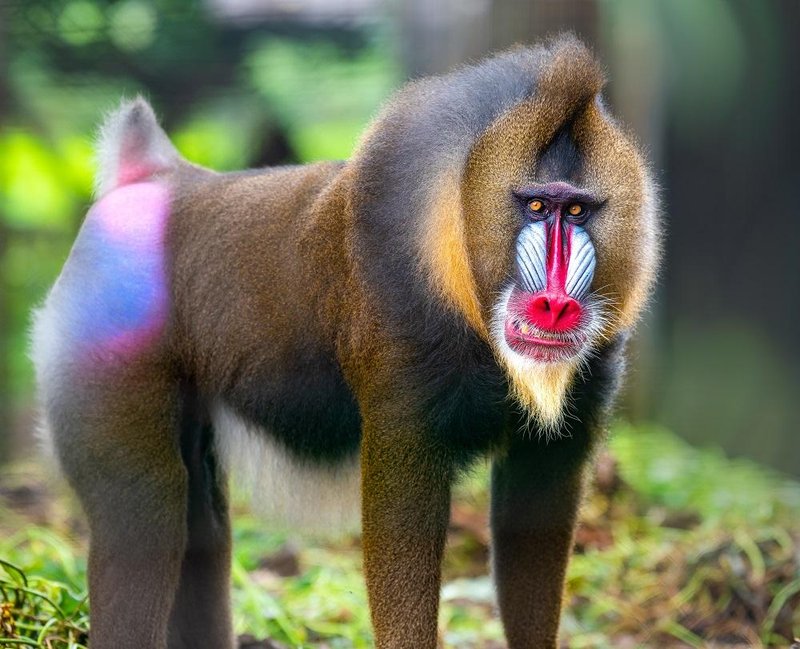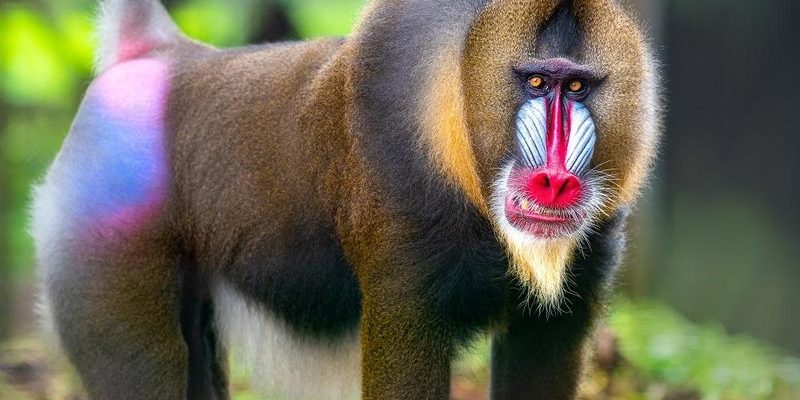
Mandrills are often mistaken for baboons, but they boast a unique combination of bright blue and red facial markings that truly set them apart. Living primarily in the dense woodlands and rainforests of Central Africa, these social animals thrive in troops, which can consist of up to 200 individuals. So, why should we care about them? Well, like many creatures in the wild, mandrills are part of a delicate web of life, contributing significantly to their environment.
How Mandrills Contribute to Seed Dispersal
One of the most critical roles mandrills play in their ecosystem is seed dispersal. It’s like they’re the garden gnomes of the forest, helping plants grow far and wide. When mandrills munch on fruits, they don’t just enjoy a tasty snack—they also consume seeds. After digesting the fruit, they excrete the seeds in different locations.
This process helps in a few ways:
- Enhancing plant diversity: By spreading seeds across various areas, mandrills aid in the growth of new plants. This diversity is crucial for maintaining healthy ecosystems.
- Enabling forest regeneration: As forests face challenges like deforestation, seed dispersal becomes important for their recovery and regrowth.
- Supporting other species: More plants mean more food sources for other animals, creating a rich environment for countless species.
So, the next time you enjoy a fruit salad, think of the mandrill nibbling on a mango in the jungle, doing its part to keep the forest thriving.
The Social Structure of Mandrill Troops
Mandrills are highly social animals, living in large troops with a complex social hierarchy. This social structure isn’t just for show; it plays a pivotal role in their ecosystem. Troops can consist of females, their young, and a few dominant males. Here’s how their social dynamics contribute to their habitat:
- Cooperative foraging: Mandrills often forage together, making it easier to find food while staying safe from predators. This cooperation helps maintain their population and reduces the pressure on food resources.
- Defense strategies: When a predator approaches, the troop will work together to protect the young and vulnerable members. This communal defense strengthens their survival chances.
- Influencing vegetation: As mandrills clear areas while foraging, they inadvertently prune certain plants. This can lead to more lush growth in some areas, creating a balanced ecosystem.
Every troop member plays a critical role in maintaining the health of their community and, by extension, the forest they inhabit.
Mandrills as Prey in the Food Chain
In the grand scheme of nature, every species has its place, and mandrills are no exception. As they thrive in their tropical habitats, they also serve as prey for larger predators, like leopards and crocodiles. This relationship is vital for maintaining the balance in their ecosystem.
Here’s how this predator-prey dynamic works:
- Regulating population: Predators help keep mandrill populations in check. If their numbers grow too large, they could overconsume vegetation, which would hurt their ecosystem.
- Encouraging diversity: When predators hunt mandrills, other species in the area thrive, as resources are more evenly distributed across the ecosystem.
- Healthier individuals: The natural selection process ensures that only the fittest mandrills survive, which leads to a healthier population overall.
In essence, mandrills, through their role as prey, contribute to the overall health and function of their ecosystem, making it more resilient.
The Impact of Habitat Loss on Mandrills
Unfortunately, mandrills face many threats, primarily due to habitat loss from deforestation, agriculture, and human encroachment. As their habitat shrinks, it has a ripple effect on their role in the ecosystem. Here’s what’s happening:
- Decreased food sources: As forests are cleared, the availability of fruit decreases, making it harder for mandrills to find food.
- Isolation of populations: Smaller patches of habitat lead to isolated mandrill groups, reducing genetic diversity and making them more vulnerable to disease.
- Loss of ecological functions: With fewer mandrills to disperse seeds and maintain plant diversity, forest regeneration dramatically slows down, affecting countless other species.
It’s clear that when mandrills struggle, the entire ecosystem suffers. Protecting their habitats is crucial not just for their survival but for maintaining the richness of their environment.
Conservation Efforts for Mandrills
Because mandrills play such an essential role in their ecosystem, conservation efforts are underway to protect these vibrant creatures. Organizations are focusing on several key areas:
- Protecting habitats: Creating and enforcing protected areas helps ensure that mandrills have a safe place to live and thrive.
- Promoting sustainable practices: Encouraging local communities to adopt sustainable agricultural methods protects the rainforest while supporting their livelihoods.
- Raising awareness: Education about the importance of mandrills can inspire action and support for conservation initiatives.
Through these efforts, we can help ensure that mandrills continue to flourish, maintaining their vital role in the ecosystem.
The Bigger Picture: Why Mandrills Matter
At the end of the day, mandrills do more than just contribute to their environment; they remind us of the interconnectedness of all life. Their colorful appearances and fascinating behaviors captivate our imaginations, and their roles in seed dispersal, social structures, and food chains highlight how every species is vital.
By protecting mandrills and their habitats, we’re not just saving a species; we’re preserving the health of the entire ecosystem. This is a call to action. Together, we can foster a world where these incredible animals continue to thrive, reminding us of the beauty and complexity of our planet’s ecosystems.
Imagine a world without mandrills. It wouldn’t be as colorful or as vibrant, would it? Let’s work together to protect the places they call home and ensure that future generations can enjoy their beauty.

